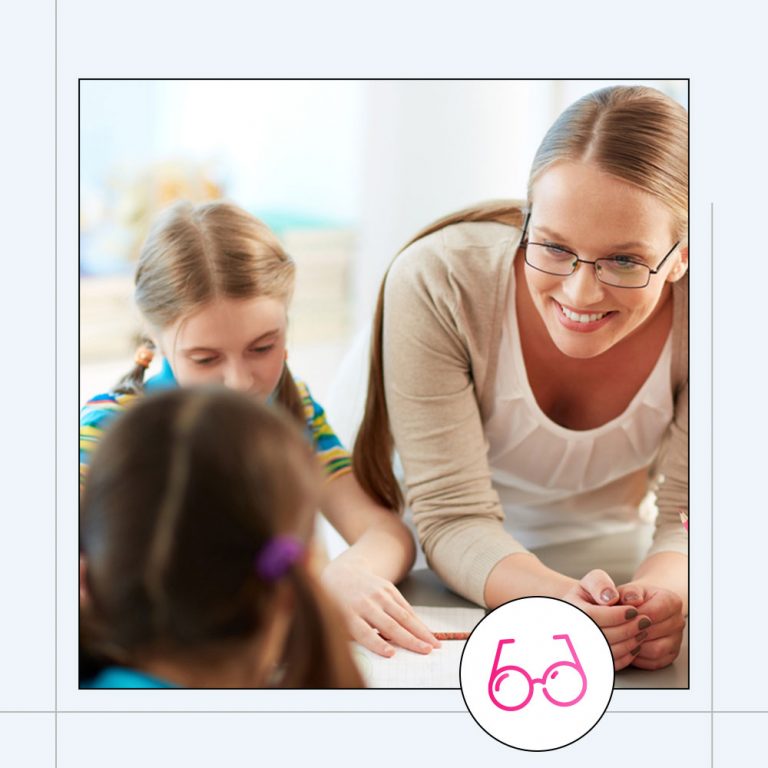“It’s definitely possible to design fantastic learning spaces that are engaging and agile, and still support this method of teaching.” Connie Glover
In a bid to improve academic outcomes and learning accessibility for all learners, some Australian states, including New South Wales, Queensland and Victoria (which includes the Momentum Schools Research Project for La Trobe University), are embracing an explicit teaching model. This research-backed approach has been mandated primarily for reading and phonics, however, it is likely to extend to other subjects.
This pedagogic shift has emerged to ensure learners successfully gain a solid foundation of knowledge and skills on which they can extend their learning with other approaches, such as student-led and inquiry-based learning. While it’s not an entirely new approach, for educators and schools who have not used explicit teaching before, this change will represent a significant shift in how they educate.
At BFX, we work hard to keep abreast of modern pedagogy so that we can design learning spaces that support all approaches. While the move to explicit teaching may, understandably, cause concern that learning spaces will revert from engaging, active-learning spaces to rows of desks, BFX’s Head of Design, Innovation and Partnerships, Connie Glover, believes that doesn’t need to be the case. We simply need to understand what explicit teaching means in a modern classroom.
What is Explicit Instruction?
Explicit teaching is a systemic approach to teaching that requires educators to clearly and fully explain concepts to learners (what to do) and effectively demonstrate the application (how to do it) before asking them to apply and extend learning, rather than encouraging learners to discover that information themselves.
A systematic approach to learning
The Australian Education Research Organisation explains that explicit teaching is intentionally systematic to ensure that learners understand content or concepts before they move further into the syllabus. It features:
- A step-by-step approach: Content is broken down into manageable chunks with comprehensive explanations.
- Explanation before application: educators explain the concept/content/task, its importance, and its relation to prior knowledge before learners work independently to integrate and extend their learning.
- “How to” before “You do”: educators use demonstrations and worked examples to show how to perform tasks or solve problems.
- Regular check-ins: educators frequently check for understanding, correct misconceptions, and support progress.
In practice, explicit instruction (or explicit teaching) often follows an “I do, we do, you do” framework rather than an inquiry-based approach, which asks learners to perform a task first to acquire knowledge and then consolidate the learning with their teacher. Fortunately, it is a flexible approach that is suitable for nearly any subject, and allows existing syllabuses and content to be adapted without formal programs or scripts.

But it’s not a return to “Chalk and Talk”
Decades of research have taught us that lecturing learners from the blackboard for hours on end and expecting them to passively absorb information isn’t effective. And that’s certainly not what educators or education authorities want to return to.
Connie believes that some of the fear around the shift to explicit teaching is that it is outdated and doesn’t allow for dynamic, interactive lessons: “It’s a misconception that we are returning to silent rows of learners being talked at. Explicit instruction is engaging with the right demonstrations and student participation. In fact, the explanation and demonstration portion of the approach can be quite quick, and the model encourages questioning, elaboration, and collaboration with peers to deepen understanding through inquiry-based activities.”
According to Education New South Wales, “learners who experience explicit teaching practices can make greater learning gains than learners who do not experience these practices.” Their “What Works Best” research project with NSW public schools has shown that where explicit instruction is used, it would appear that academic outcomes are greater, and learners are motivated, engaged and able to persevere in the face of academic obstacles.
The Australian Education Research Organisation elaborates on these gains, outlining the benefits of explicit instruction, including:
- That it is a universal approach that benefits all learners. The mechanisms of learning that transfer information to long-term memory, thereby building knowledge and understanding, are effective for all learners and all subjects. However, “the amount of time, guidance, and practice needed varies from student to student.”
- Its structured and scaffolded nature supports diverse learning needs. This makes it particularly beneficial for learners who find learning challenging because of additional limitations in memory or differences in how they process language and information.
- It optimises learning by:
- Fully breaking down content to aid the transfer of information to long-term memory.
- Offering opportunities for review and practice so learners can retain and recall what they’ve learned.
- Organising and sequencing content around a particular objective and connecting it back to prior knowledge to foster a depth of understanding.
- Giving learners a strong foundation of knowledge with mental models that they can use to extend and apply their learning independently.
In an environment that is rich in evidence-based pedagogical approaches and education technology, explicit teaching is proving to be a vital method for ensuring learners have the skills and knowledge they need to succeed outside school.
How to design comfortable and engaging learning spaces for explicit teaching
While a shift to explicit teaching might make you think you have to step back in time to a more basic classroom set-up, that certainly isn’t the case.
“We want to dispel the myth that a modern explicit learning environment has to be boring. I’ve seen explicit instruction emerging, and as a company, we often take the more modern route for learner agency. Learning spaces still need to be agile – particularly in primary learning spaces so you can move the room around as you change topics and activities,” Connie says.
Ideal settings for explicit learning have two simple requirements:
- A natural visual focal point from which to deliver instructions, such as a whiteboard, interactive or projector screen, or a demonstration bench. This should be easily visible to all learners.
- Comfortable break-out areas for group and independent work.
“In terms of classroom layout, educators can be creative and allow learners to find ways of using the space that is physically comfortable for them. The explicit instruction doesn’t have to be in the middle or front of the room either – it could be off to the side so that the group working area is the main focus,” Connie explains.
Furthermore, learners should still have input into creating a dynamic and engaging learning area that works for them, particularly when it comes to seating. Connie believes we need to take a step back and think differently about what learners really need to learn through explicit instruction: “Do they need the same environment to hear the same message? As long as they are receiving the same information at the same time, does it matter if they are seated in a different way – perhaps on a stool or on soft seating? Educators need to work with learners to find out what seating and desk options work best and go from there.”

Key elements for an explicit teaching focussed learning spaces
- Flexible Seating Arrangements
To facilitate different teaching phases (I do, we do, you do), use movable desks and chairs that can be easily reconfigured for individual work, group activities, or whole-class instruction.
For example, the Dynami Student Chair allows learners to stay at group working areas while simply moving themselves around to face the screen, board or demonstration area for explicit instruction. While a straight SmarTable with wheels can easily be moved around to create space for different subjects or practical activities.
- Clear Visibility and Accessibility
All learners need to be able to see and hear the teacher and instructional materials. Seating can be arranged in a semi-circle or U-shape (tiered for larger classes) to maintain eye contact and engagement. Use raised platforms or podiums for demonstrations.
Learners don’t have to be limited to chairs either; static stools and active stools are great options that work well with u-shaped set-ups to encourage learner agency.
- Interactive Whiteboards and Displays
Install interactive whiteboards or large screens to display worked examples, step-by-step instructions, and multimedia resources. Most learning spaces now have these, but as suggested above, to enhance the flexibility of the room, you may wish to have mobile versions.
- Comfortable Practice and Collaboration Areas
The “We do. You do” phases of explicit teaching require spaces for guided and independent practice. In any case, educators should endeavour to create a space where learners feel safe and ready to learn with comfortable seating, adequate lighting, and decor that reflects a positive and inclusive atmosphere.
In theory-based subjects, learners can still have agency about what types of seating they use, for example, sofas with jotter tables, ottomans, desk and chair combinations, cushions on the floor or even quiet booths.
Subjects such as art, design and technology, science or hospitality require high benches with comfortable Dynami High Back Lab Stool.
- Storage for Teaching Aids
To keep instructional materials organised and easily accessible, use labelled bins, shelves, and cabinets to store manipulatives, visual aids, scientific equipment, musical instruments and other teaching tools. A mobile storage unit like the Buddy Classroom Mobile Storage Unit is ideal.
A Final Word
As we learn more about how our brains work and how learners absorb and retain information, traditional pedagogical approaches will develop, and new ones will emerge. During these transitions, it’s our role as educators and designers to set learners up for success with learning spaces that both suit the teaching methods being employed and meet learner’s needs for comfortable, engaging and inspiring spaces. Our team at BFX are ready to help you design a classroom that makes it easy for your learners to learn through explicit teaching. Contact us today to discuss the possibilities.
Sources:
- Australian Education Research Organisation (18 September 2023) Explicit instruction optimises learning: Implications for policymakers, online at: https://www.edresearch.edu.au/summaries-explainers/explainers/explicit-instruction-optimises-learning
- Education New South Wales (26 June 2024) Explicit teaching drives student motivation, engagement, and achievement in NSW public schools – a What Works Best research update, online at: https://education.nsw.gov.au/about-us/education-data-and-research/cese/publications/research-reports/what-works-best-2020-update/explicit-teaching-wwb-research-update
- Education New South Wales (2024) What Works Best: Reading K-6 – Theme 2 – Explicit Teaching, online at: Theme 2 – Explicit teaching
- The Guardian (July 2024) NSW educators to embrace ‘step by step’ explicit instruction method amid major syllabus shake-up, online at: https://www.theguardian.com/australia-news/article/2024/jul/24/nsw-educators-explicit-instruction-method-teaching-syllabus
- La Trobe University (21 October 2024) Momentum Schools Lead way for explicit instruction, online at: https://www.latrobe.edu.au/news/articles/2024/release/momentum-schools-lead-way-for-explicit-instruction













